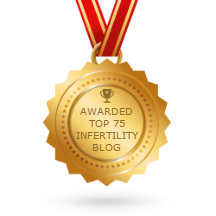
An infertility evaluation is a set of examination and tests that are done to try and find the cause of infertility. This is when a woman is not able to get pregnant in spite of having unprotected intercourse for a year. Basically the four critical areas which are needed to identify the cause are the eggs, sperm, fallopian tubes and the uterus. The various tests conducted will fall under one of these areas. According to the survey it has been found that 40% cases of infertility are due to the male, the other 40% cases of infertility are due to the female, and in 10% both partners will have a problem. The rest 10% of the cases no cause of the infertility can be identified even after extensive testing, which is termed as unexplained infertility. But with the help of advance medical science infertility often can be successfully treated even if no cause is found. For the sake of initial testing it is important that both partners undergo the tests to carefully assess and identify the extent of the infertility problem.
Female Infertility Evaluation
The basic evaluation of the female includes detail history taking and a physical examination.
Case History
- Checking the frequency of the menstrual cycle bleeding to help decide if ovulation is happening or there are issues like, diminished reserve (aging) of the ovary or uterine defects (fibroids or polyps) are present.
- Collecting information such as, past sexually transmitted infections, painful periods or intercourse, and/or a previous abdominal surgery.
- To understand and collect information related to social habits like smoking, alcohol consumption’s, or being exposed to environment like radiations or substances that are conducive to infertility.
Physical Examination
The physical examination is done to evaluate the pelvic organs and assess the potential hormonal problems.
- This includes the examination of the pelvic region with the help of ultrasound exam, hysterosalpingography, sonohysterography, hysteroscopy, and laparoscopy which helps in discovering abnormalities related to Uterus, Fallopian tubes, and ovaries.
- Additional hormonal testing or ultrasounds may be required to evaluate ovulation and ovarian reserve
- Blood tests are carried out to check the levels of hormones such as prolactin, LH (luteinising hormone), FSH (follicle stimulating hormone) and TSH (thyroid stimulating hormone) are done between Day 3-5 of the cycle; followed by a hysterosalpingogram
Male Infertility Evaluation
Males equally contribute towards infertility. That is why evaluation of male is critical to analyze and develop a comprehensive treatment plan for the infertile couple. The male fertility work-up includes a detail history, physical examination, general hormone tests
Case History
- An evaluation of the past medical history, which might include surgeries and medications used for treatment.
- Understand the family history of infertility or birth defects.
- Evaluate the lifestyle and occupational history to evaluate potential exposure to substances that could impact fertility.
Physical Examination
A general physical examination is an essential part of the evaluation of male infertility.
- Examination of the penis; including the location of the urethral meatus
- Palpation of the testes and measurement of its size
- Existence and consistency of both the vasa and epididymides
- Secondary sex characteristics including physique
Laboratory tests
- Urinalysis – is done to identify if any infections are present.
- Semen Analysis – This looks for the count, motility and the morphology. The normal count should contain 20 million sperm/ml, or more. Motility is the ability of the sperm to swim, it is generally expressed in percentage about 60% of them should be able to move. Morphology which refers to the evaluation of the various shapes of sperm. Numerous descriptive systems exist to evaluate morphology, and within each system, sperm are designated normal or abnormal based on a list of criteria.
- Hormonal tests – This test evaluate levels of testosterone and FSH (follicle stimulating hormone) to determine the overall balance of the hormonal system and specific state of sperm production. Serum LH (luteinizing hormone) and prolactin are other hormonal tests that may be done if earlier tests indicate the need for them.
After completing the diagnostic evaluation, a decision is made about what treatments to choose it may include medical or endocrinologic treatment, surgical correction, or a decision to manipulate or process the sperm which already exists to achieve a pregnancy.
Why Us
At ShrikhandeIVF we understand the physical and emotional pressures associated with infertility and that every individual have very special needs. Since 1996, we have helped get smile to hundreds of women and couples from all over the world. If you are looking for infertility treatment our team of specialists will help you through this difficult time by providing the best care to suit your particular needs. We offer revolutionary treatments and first class clinical support from leading consultants, specialist nurses, embryologists, ultrasonographers and counsellors who are committed solely to fulfilling one of our most human aspirations.




 (+91) 880 557 7600
(+91) 880 557 7600
 Abhyankar Road, Dhantoli, NAGPUR-12
Abhyankar Road, Dhantoli, NAGPUR-12





